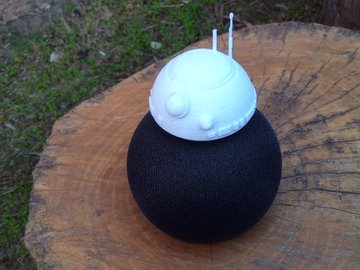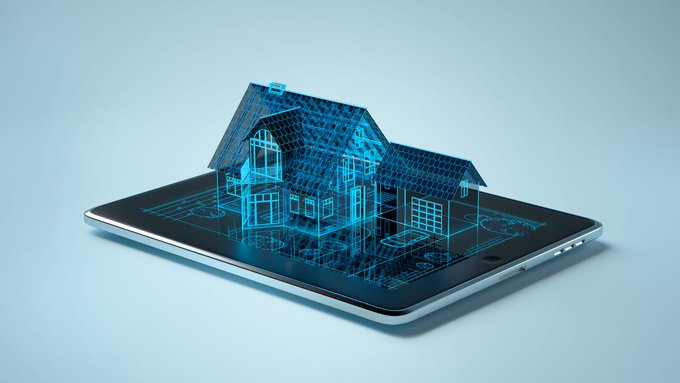Building Your Dream Smart Home: A Budget-Friendly Guide. Imagine a home that anticipates your needs, seamlessly integrating technology to create a more comfortable, secure, and efficient living space. This isn’t science fiction anymore – it’s the reality of a smart home. But for many, the idea of a smart home conjures images of hefty price tags and complex setups. The good news? Building a budget-friendly smart home is entirely achievable!
This blog empowers you to create your dream smart home without breaking the bank. We’ll explore key areas like identifying your needs, navigating smart home ecosystems, finding affordable devices, and maximizing your experience through automation and routines.
Prioritizing Your Needs: Finding the Perfect Smart Fit
Before diving into the world of smart gadgets, it’s crucial to identify what you truly want your smart home to do. Here are some questions to ask yourself:
- What aspects of daily life would you like to automate? Do you dream of waking up to a pre-heated bathroom or controlling your lights with your voice? Maybe security is your top priority, and you want to keep an eye on things remotely.
- What are your biggest pain points? Do you leave the lights on unintentionally, constantly fiddle with the thermostat, or feel vulnerable when you’re away from home?
Common Smart Home Solutions for Different Needs:
Crafting a Comfortable and Convenient Lifestyle:
- Smart Lighting: Imagine walking into a well-lit home after a long day, without fumbling for a switch. Smart lighting allows you to control lights remotely using your smartphone or voice assistant, set schedules for automatic turn-on/off, and even create customized lighting scenes for different moods or activities.
- Smart Plugs: Breathe new life into ordinary lamps, fans, or even small appliances by turning them “smart” with smart plugs. These affordable devices connect to your Wi-Fi network, allowing you to control them remotely, set schedules, and even monitor energy consumption.
- Smart Thermostats: Tired of constantly adjusting the thermostat? Smart thermostats learn your preferences and automatically adjust the temperature throughout the day for optimal comfort. Some models can even be controlled remotely, allowing you to pre-heat or cool your home before you arrive.
- Smart Speakers: These voice-activated devices like Google Home or Amazon Echo act as the central hub for many smart home systems. Use your voice to control lights, thermostats, play music, set reminders, and access information hands-free. Smart speakers also integrate with many other smart home devices, creating a truly connected experience.
- Smart Coffee Makers: Who wouldn’t love the aroma of a freshly brewed cup of coffee waiting for them in the morning? Smart coffee makers allow you to schedule brewing times remotely, adjust settings for strength and flavor, and even receive notifications when brewing is complete.
Enhancing Home Security and Peace of Mind:
- Smart Doorbells: Never miss a visitor again! Smart doorbells with built-in cameras and two-way communication allow you to see and speak to whoever’s at your door, even when you’re not home. Motion detection features can also send alerts to your phone, keeping you informed of any activity at your doorstep.
- Security Cameras with Motion Detection: Keep an eye on your home 24/7 with strategically placed security cameras. These Wi-Fi cameras offer live video feeds, motion detection with push notifications, and some even allow for night vision and recording capabilities.
- Smart Locks: Ditch the worry of lost keys! Smart locks let you lock and unlock your doors remotely using your smartphone, voice assistant, or a dedicated key fob. Grant temporary access to guests or receive notifications when your door is unlocked, providing greater control and security for your home.
Saving Money and Going Green:
- Smart Thermostats with Scheduling and Learning Capabilities: Smart thermostats not only enhance comfort but also contribute to energy efficiency. By scheduling automatic adjustments and learning your routine, they can optimize heating and cooling cycles, potentially reducing your energy bills.
- Smart Power Strips: Combat phantom energy drain with smart power strips. These strips allow you to control individual outlets remotely, cutting power to electronics that are not actively in use. This can significantly reduce your standby energy consumption and save you money on your electricity bills.
Entertainment at Your Fingertips:
- Smart TVs: Transform your TV into a hub for entertainment and smart home control. Smart TVs connect to the internet, allowing you to stream movies, shows, and music directly from your favorite platforms. Many smart TVs also integrate with voice assistants, letting you control them hands-free.
- Smart Speakers with Integrated Music Streaming: Smart speakers like Sonos or Amazon Echo not only control your smart home but also double as high-quality music players. Enjoy your favorite music streaming services, podcasts, and audiobooks with simple voice commands or through the dedicated app.
Building Your Smart Home Ecosystem: Hubs, Platforms, and Compatibility
Imagine your smart home as a well-coordinated orchestra, where each device plays its part to create a symphony of comfort, security, and convenience. To achieve this harmony, you need an ecosystem – a network of compatible devices that work together seamlessly. This section delves into the world of hubs, platforms, and compatibility, equipping you to build your dream smart home without any discordant notes.
The Role of Hubs: The Conductor of Your Smart Symphony
Many smart home ecosystems function around a central hub, acting as the brain of the operation. This hub serves as the central communication point, receiving signals from your connected devices and sending commands accordingly. Popular options include hubs from Amazon (Echo Plus), Google (Nest Hub Max), and Samsung (SmartThings Hub). Here’s a breakdown of the advantages of using a hub:
- Centralized Control: Imagine controlling all your smart lights, thermostats, and locks from a single app or interface. A hub makes this possible, offering a unified platform for managing your entire smart home.
- Simplified Automation: Hubs often come with built-in automation features, allowing you to create custom routines where your devices interact with each other based on pre-defined triggers. For instance, setting your smart lights to turn on when your smart lock detects you arriving home.
- Enhanced Compatibility: Hubs typically support a wider range of compatible devices compared to individual apps. This allows you greater flexibility when choosing devices for your smart home.
Going Hub-Less: When Simplicity Reigns Supreme
Not all smart homes require a central hub. Many devices, particularly newer models, can connect directly to your Wi-Fi network. This eliminates the need for a separate hub and allows you to control them through their own dedicated apps or through voice assistants like Alexa or Google Assistant. Here are some of the benefits of a hub-less approach:
- Cost-Effective: Since you’re not purchasing a separate hub, this approach can be more budget-friendly.
- Simple Setup: Connecting devices directly to your Wi-Fi network often involves a streamlined setup process.
However, there are also some things to consider when going hub-less:
- Limited Functionality: You might lose out on some features like advanced automation or centralized control offered by hubs.
- Potential Compatibility Issues: Ensuring compatibility between various devices without a central hub can be more challenging.
The Balancing Act: Compatibility is Key
Regardless of whether you choose a hub-based or hub-less approach, compatibility remains paramount. Here are some golden rules to ensure your smart home ecosystem functions like a well-oiled machine:
- Check Compatibility: Always verify if the devices you choose work with your chosen hub or platform (if using one) and with each other. Look for devices that utilize common standards like Zigbee or Z-Wave for better compatibility. These standards ensure your devices can communicate seamlessly within your ecosystem.
- Read Reviews and Research: Before purchasing any device, familiarize yourself with its features, compatibility information, and user reviews. This can help you avoid compatibility headaches down the road.
- Start Small and Scale Up: Building a smart home is a journey, not a destination. Begin with a few compatible devices and gradually add more as you become comfortable with the ecosystem and your needs evolve.
By following these tips, you can navigate the world of hubs, platforms, and compatibility to build a smart home ecosystem that functions flawlessly, bringing harmony and convenience to your daily life.
Please share your thoughts in comment about , at theproductrecap.com we are open to friendly suggestions and helpful inputs to keep awareness at peak.
.








